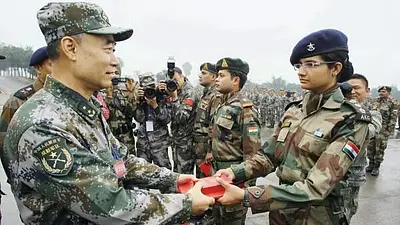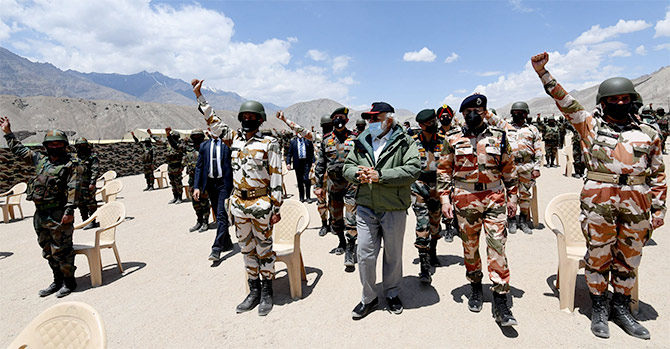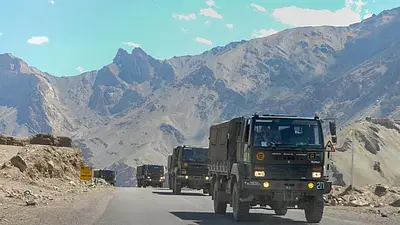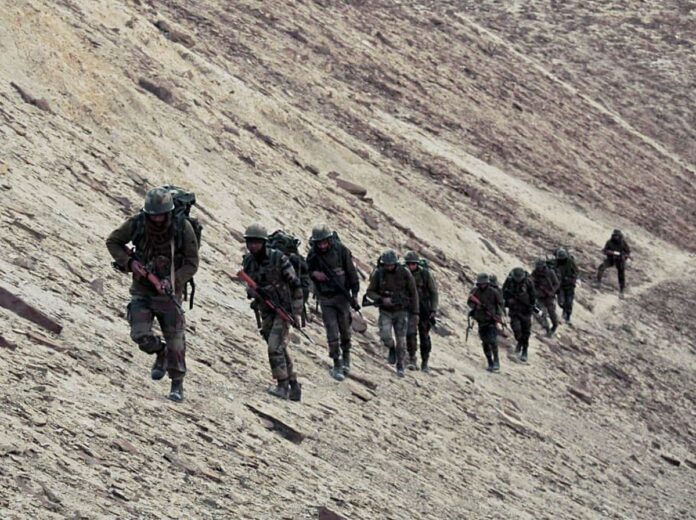India and China Reach Agreement on Patrolling LAC Along Line of Actual Control Amid Ongoing Border Tensions
In a significant development, China on Tuesday acknowledged progress in ongoing talks with India regarding patrolling along the Line of Actual Control (LAC). This announcement comes as a positive signal towards resolving the long-standing standoff that has plagued relations between the two countries since 2020. Chinese Foreign Ministry spokesperson Lin Jian stated that both sides have reached a solution on “relevant matters” related to patrolling in the disputed areas. This statement closely follows remarks made by Indian Foreign Secretary Vikram Misri, who had revealed the agreement on Monday, marking it as a critical step towards disengagement and de-escalation along the LAC.

China’s foreign ministry further underscored the close communication between both nations via diplomatic and military channels, suggesting that the resolution of the border issue is moving forward. Lin said, “China and India have maintained close communication through diplomatic and military channels regarding border-related issues. Currently, the two sides have reached a solution on the relevant matters, which China views positively.” This development is seen as a breakthrough in the tense situation, which has been in place for nearly five years, since the standoff began in May 2020 on the banks of Pangong Lake.

Foreign Secretary Misri, during a media briefing related to Indian Prime Minister Narendra Modi’s visit to Russia, announced the agreement, highlighting that it would lead to disengagement in the contentious areas along the LAC. Misri also indicated that the agreement would address issues that had arisen since 2020, when the standoff began, and suggested that both sides were poised to move forward with the “next steps” in the disengagement process. This agreement is the result of numerous rounds of diplomatic and military discussions, aiming to de-escalate tensions that have remained a sore point in India-China relations since the deadly clashes in Galwan Valley in June 2020.
In the wake of this announcement, External Affairs Minister S. Jaishankar reiterated that the situation along the LAC had returned to what it was in 2020, prior to the beginning of the standoff. This suggests that, after years of negotiations, both sides have finally agreed to return to the status quo that existed before the conflict intensified. However, the details of this agreement, including how patrolling arrangements will be handled or how forces will be de-escalated, have not yet been fully disclosed.

The backdrop to this agreement has been a series of high-level meetings between Indian and Chinese leaders over the past several months. These include discussions between Jaishankar and his Chinese counterpart Wang Yi on the sidelines of key diplomatic forums, including the Shanghai Cooperation Organisation (SCO) summit in Kazakhstan and ASEAN-related meetings in Laos. National Security Advisor Ajit Doval also met Wang during a BRICS-related meeting in St. Petersburg in September, further facilitating discussions aimed at reducing tensions along the border.
The standoff along the LAC has been a major point of contention between India and China since May 2020. The situation escalated following a brutal clash in Galwan Valley in June 2020, which resulted in the deaths of 20 Indian soldiers and at least four Chinese troops—the first fatalities along the LAC in 45 years. This event marked a low point in bilateral relations between the two countries, which had previously worked to maintain peace along the disputed border. Following the Galwan Valley incident, both sides deployed tens of thousands of troops to the region, and the LAC became a highly militarized zone with heightened tensions.
India has consistently maintained that normalizing relations with China is contingent upon achieving peace and stability along the border. Diplomatic and military efforts have been ongoing, with both sides engaging in numerous rounds of talks to disengage frontline forces from key areas of conflict, such as Pangong Lake, Gogra, and Hot Spring. However, two critical “friction points” remain—Depsang and Demchok—where Chinese forces have blocked Indian access to key patrolling points, creating strategic challenges for the Indian military.
The recent agreement on patrolling arrangements is a positive step towards resolving these outstanding issues, though specifics about the modalities of de-escalation and troop withdrawal to peacetime positions remain unclear. According to reports, both India and China have deployed approximately 60,000 troops each along the LAC, underscoring the gravity of the situation and the need for a peaceful resolution.
Looking ahead, both sides are expected to work together to implement the agreed-upon plan. “In the next phase, China will work with India to effectively implement the solution plan,” Lin said, indicating that Beijing is committed to carrying out the terms of the agreement. This statement comes at a crucial time, as Prime Minister Modi and Chinese President Xi Jinping are expected to meet on the sidelines of the BRICS Summit in Kazan, Russia, on October 23. Although details of their potential meeting remain speculative, such a high-level interaction could further solidify the progress made in resolving the LAC dispute.
The ongoing diplomatic efforts represent a critical moment in India-China relations. The border standoff, which began as a localized conflict near Pangong Lake, has grown into a larger geopolitical issue with significant implications for regional stability. Both nations have been careful to avoid a full-scale conflict, but the presence of tens of thousands of troops along the border has made the situation volatile. The agreement on patrolling, if successfully implemented, could pave the way for a broader resolution of the border dispute, which has been a contentious issue between the two countries for decades.
As the situation develops, it is clear that both India and China recognize the importance of maintaining open channels of communication and finding diplomatic solutions to their disagreements. The world will be watching closely as both sides move forward with the implementation of the agreement and work towards de-escalating tensions along the LAC. For now, the agreement marks a hopeful step towards peace and stability in a region that has seen far too much conflict in recent years. However, the true test of this progress will lie in the actions both nations take in the coming months to reduce the military presence along the LAC and restore trust in their bilateral relationship.

